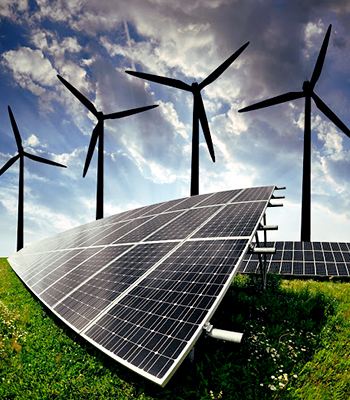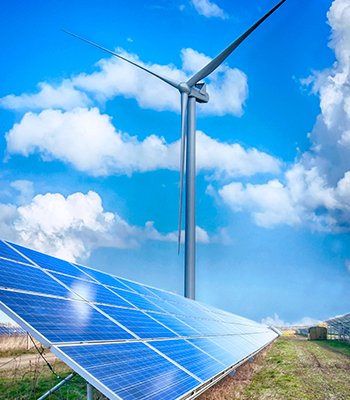Solar in the new age is a bit of a process with the new tech
Solar power is the conversion of energy from sunlight into electricity, either directly using photovoltaics, indirectly using concentrated solar power, or a combination. Concentrated solar power systems use lenses or mirrors and solar tracking systems to focus a large area of sunlight into a small beam. Photovoltaic cells convert light into an electric current using the photovoltaic effect Photovoltaics were initially solely used as a source of electricity for small and medium-sized applications, from the calculator powered by a single solar cell to remote homes powered by an off-grid rooftop PV system. Commercial concentrated solar power plants.
Why Solar Energy is Better Than Wind
Solar energy is radiant light and heat from the Sun that is harnessed using a range of ever-evolving technologies such as solar heating, photovoltaics, solar thermal energy, solar architecture, molten salt power plants and artificial photosynthesis.

When Will the World Go Out of Oil
It is an essential source of renewable energy, and its technologies are broadly characterized as either passive solar or active solar depending on how they capture and distribute solar energy or convert it into solar power. Active solar techniques include the use of photovoltaic systems, concentrated solar power, and solar water heating to harness the energy.
Choose Innovations, Choose Life!
In 2011, the International Energy Agency said that "the development of affordable, inexhaustible and clean solar energy technologies will have huge longer-term benefits. It will increase countries' energy security through reliance on an indigenous, inexhaustible, and mostly import-independent resource, enhance sustainability, reduce pollution, lower the costs of mitigating global warming, and keep fossil fuel prices lower than otherwise. These advantages are global. Hence the additional costs of the incentives for early deployment should be considered learning investments; they must be wisely spent and need to be widely shared".
Solaa The Best Solar Power In Your City
- Commercial Solar
- Residential Solar
- Commercial Wind
Solar radiation is absorbed by the Earth's land surface, oceans – which cover about 71% of the globe – and atmosphere. Warm air containing evaporated water from the oceans rises, causing atmospheric circulation or convection. When the air reaches a high altitude, where the temperature is low, water vapor condenses into clouds, which rain onto the Earth's surface, completing the water cycle. The latent heat of water condensation amplifies convection.
By HetmayarA solar panel, or photo-voltaic module, is an assembly of photo-voltaic cells mounted in a framework for installation Solar panels use sunlight

Geography affects solar energy potential because areas that are closer to the equator have a higher amount of solar radiation. However, the use of photovoltaics that can follow the position of the Sun can significantly increase the solar energy potential in areas that are farther from the equator Time variation effects the potential of solar energy because during the nighttime, there is little solar radiation on the surface of the Earth for solar panels to absorb. This limits the amount of energy that solar panels.
Solar technologies are characterized as either passive or active depending on the way they capture, convert and distribute sunlight and enable solar energy to be harnessed at different levels around the world, mostly depending on the distance from the equator. Although solar energy refers primarily to the use of solar radiation for practical ends, all renewable energies, other than Geothermal power and Tidal power, derive their energy either directly or indirectly from the Sun Active solar techniques use photovoltaics, concentrated solar power, solar thermal collectors, pumps, and fans to convert sunlight into useful outputs. Passive solar techniques.






Robert John
January 13 2021Photovoltaic modules use light energy photons from the Sun to generate electricity through the photovoltaic effect. Most modules use wafer-based crystalline silicon cells or thin-film cells. The structural load carrying member of a module can be either the top layer or the back layer Cells.
ReplyChristine Hill
December 27 2021A single solar module can produce only a limited amount of power; most installations contain multiple modules adding voltages or current to the wiring and PV system A photovoltaic system.
Reply